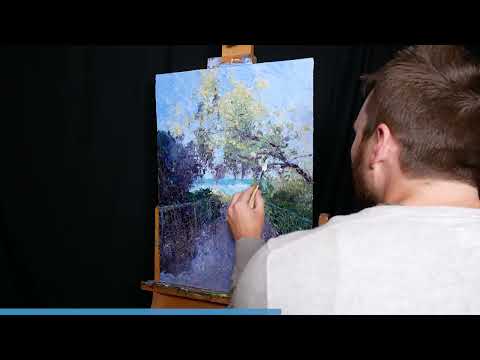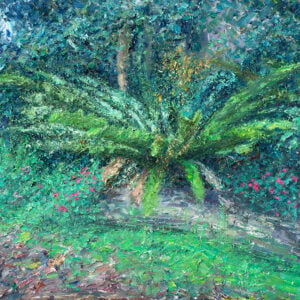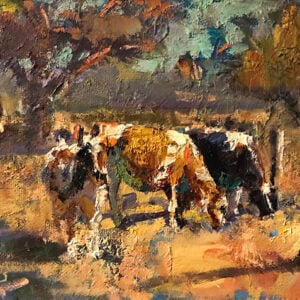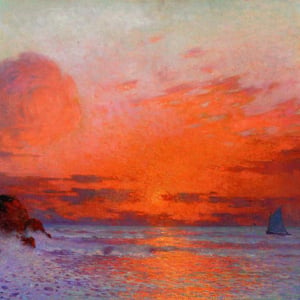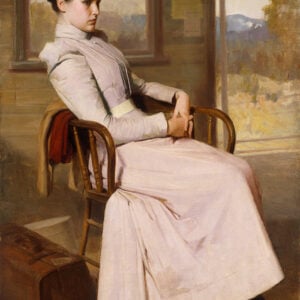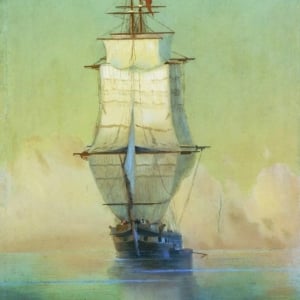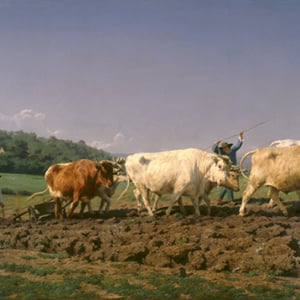Below is Gold Coast, Path to the Sea. I painted this almost entirely with palette knives. I wanted to capture that day’s cool sea breeze, warm sunlight, and crisp colors.

Reference Photo and Study
Here’s the reference photo I painted from:

Feel free to paint it yourself.
I didn’t paint a study for this. Sometimes I prefer to just jump straight into it and see where the brush takes me. As Joaquín Sorolla once said:
“Go to nature with no parti pris. You should not know what your picture is to look like until it is done. Just see the picture that is coming.”
Details
- Oil on stretched canvas. 18 x 24 inches.
- Main colors: Ultramarine blue, cobalt blue, cadmium red, alizarin crimson, cadmium yellow, cadmium yellow deep, viridian green, winsor violet, and titanium white.
Refer to my supplies list for more details on what I use.
Notes
- The palette knife is a fun tool to paint with. It’s perfect for bold, crisp strokes. You can’t achieve the same effects with a brush.
- Palette knife work is best paired with a touch of dexterity and finesse. Otherwise, it can come off as brash and sloppy.
- I worked in a direct manner, working on each area until near finish before moving onto the next area. The start is slower and more calculated with this approach, but the finishing strokes are easier and faster.
- I made use of multicolored strokes to capture the illusion of detail and activity. To do this, I leave the colors partially unmixed on the knife before making a stroke.
- The sand is a great lesson on color temperature. Notice the dramatic changes in color as it goes from shadow to light. Cool purples and blues against tinted oranges and yellows.
- The light-colored leaves and the sky are compressed around a similar value range. This is a form of value simplification.
Time-Lapse
Here’s a brief time-lapse of the painting:
Progress Shots
Step 1: Simple sketch, focusing on key shapes and lines.

Step 2: Start on the sky and leaves.

Step 3: Start working on the darks.
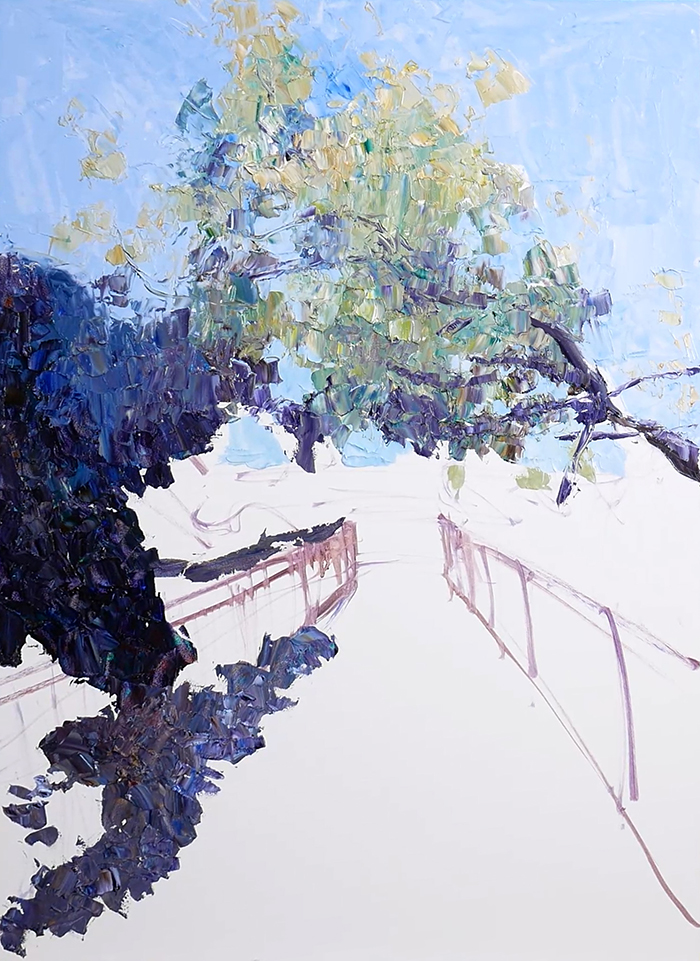
Step 4: Push into the shadowed path. If I make the purple too light, it won’t look like it is in shadow. If I make the purple too dark, it won’t look like white sand.

Step 5: Work on the bushes on the right. Start painting the sea.

Step 6: Block in the rest of the painting.

Step 7: Use the tip of a palette knife to draw the fence posts and wire in the wet paint.

Step 8: Refine and make sure everything works together.

Step 9: Sign and photograph the finished painting.

Additional Resources
Thanks for Reading!
Thanks for taking the time to read this post. I appreciate it! Feel free to share with friends. If you want more painting tips, check out my Painting Academy course.
Happy painting!
Dan Scott
Draw Paint Academy

